Starlink Maritime – affordable options?
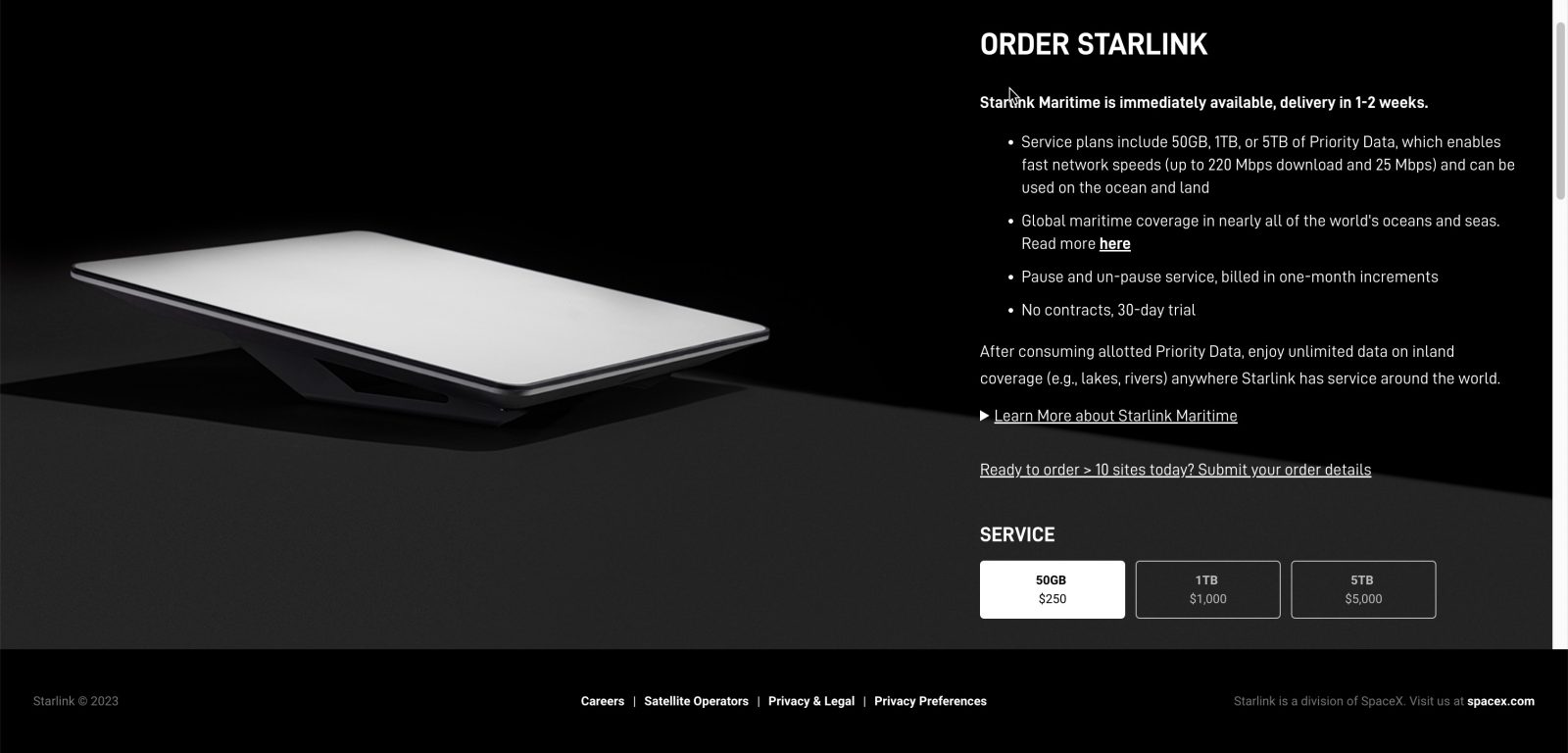
Starlink has changed the landscape for those searching for internet connectivity in out-of-the-way places. If those out-of-the-way places happened to be on land, there have been good and cost-competitive options. But, if you have been after service on open water, the options have been less affordable. However, as I mentioned in my last update, there seems to be little Starlink likes more than change, so it shouldn’t come as a shock; there’s more change. This time that change brings a Maritime plan that may be in reach of many recreational boaters.
A note: all prices in this article are quoted in U.S. dollars. Starlink seems to set their prices in USD and then convert to local currency. Occasionally, they may run a promotion that makes one country dramatically cheaper than these prices.
Maritime launched in July of 2022 with a $10,000 hardware package of two terminals and a $5,000 monthly service plan. It has only been nine months since Maritime was introduced, but there have already been major changes. At its introduction, it seemed Maritime was a service aimed at megayachts and commercial vessels, not recreational boaters.
Starlink has dropped the hardware price from $10,000 for two terminals to $5,000. A few months ago, they introduced priority data caps. The $5,000 monthly plan came with five terabytes of priority data. They also introduced a one-terabyte priority cap for $1,000. And at some point, they moved from two terminals to one with maritime service. With that move came a reduction in hardware cost to $2,500. Maritime service, as far as I know, will not work with the $600 hardware.
Current maritime plans
| Plan | Cost | Priority Data | Cost per GB of priority data |
| 5 terabyte | $5,000 | 5,000 gigabytes | $1.00 |
| 1 terabyte | $1,000 | 1,000 gigabytes | $1.00 |
| 50 gigabyte | $250 | 50 gigabytes | $5.00 |
Until now, there have been two Maritime service plans, five terabytes for $5,000 per month and one terabyte for $1,000 per month.But now, there’s a new, cheaper option. For $250 a month, you get 50 gigabytes of priority data. That’s five times the cost per gigabyte for prioritized data, but, as we will talk about more in a minute, there’s a lot of value to this plan. Prioritized Maritime traffic offers download speeds from 50-220 megabits per second.

About a month ago Starlink changed the behavior after the priority data allocation was exhausted. Previously, service would continue but at a limited 1 Mbps upload and download. Now, instead of limiting throughput, your location determines the outcome. Promotional emails suggest additional prioritized data will cost $2 per gigabyte.
Roam, as the RV service is now known, says very clearly that it may only be used on land. Currently, it works, but Sean Welsh has a good post on Loose Cannon about the danger of taking Starlink’s status quo as a predictor of the future.
Maritime with the flat high-performance terminal has been the only service and hardware approved for use on a boat. But, until now, its cost has put it out of reach for many, if not most, recreational boaters. The introduction of the $250, 50-gigabyte maritime plan gives boaters a more affordable on-the-water option that stays within the terms of service (TOS).
Compared to Roam


Let’s compare the $250 Maritime with Roam. There are two Roam offerings, one that works within a continent and another, Global Roam, that works anywhere in the world. But, the terms of service restrict both plans to land. Continental Roam is $150 a month and Global Roam is $200 a month. But Global Roam currently can’t be activated with the flat, high-performance terminal. So, for $50 a month more than Global Roam, you get coastal and on-land service with 50 gigabytes of offshore data and the ability to use that data in motion.
The wording of the Roam service descriptions above caught my eye. Previously, Starlink has said (and the TOS still do) that Roam is only for use on land. Now, the description says it’s not permitted for use on the ocean. There’s a lot of water that’s not the ocean, so I think this might be a positive direction.
However, there’s a big question in my mind that’s left unanswered in Starlink’s currently available information. That is, does data consumed inland count against the 50 gb cap? If a boater uses 50 gb of data (or more) while at port and then leaves the dock mid-month for a long, open water passage, will they have already exhausted their 50 gb allotment? If so, that significantly devalues the service. Current speculation I’m reading suggests that indeed, inland usage will likely deplete that 50gb cap. I’m hopeful that might be changed, otherwise, it will be difficult to for users to take advantage of their priority data.
Like Roam, Martime plans can be suspended on a month by month basis. Early anecdotes from RV plan subscribers suggested that process was often bumpy. Fortunately, recent reports seem to suggest things are getting better.
Is 50 gb enough?

First, let’s acknowledge the highly first world nature of determining if your satellite internet connection will deliver enough data for your trans-ocean voyage. I also think it’s highly relevant to note that at $250 Starlink is minimally an order of magnitude cheaper than any other satellite internet option and likely to deliver better performance as well. But, because Starlink’s model has been to allow their service to operate well beyond what’s promised in the terms of service, users are often upset when the service is pared back to what’s in the TOS. A read of the comments on several of the Starlink Facebook groups shows this clearly.
Keep in mind that the faster throughput performance you get, the faster you can use up your 50 gb data bucket. In fact, at Starlink’s 200 Mbps quoted rate, it is theoretically possible to transfer 50 gigabytes in just 33 minutes!
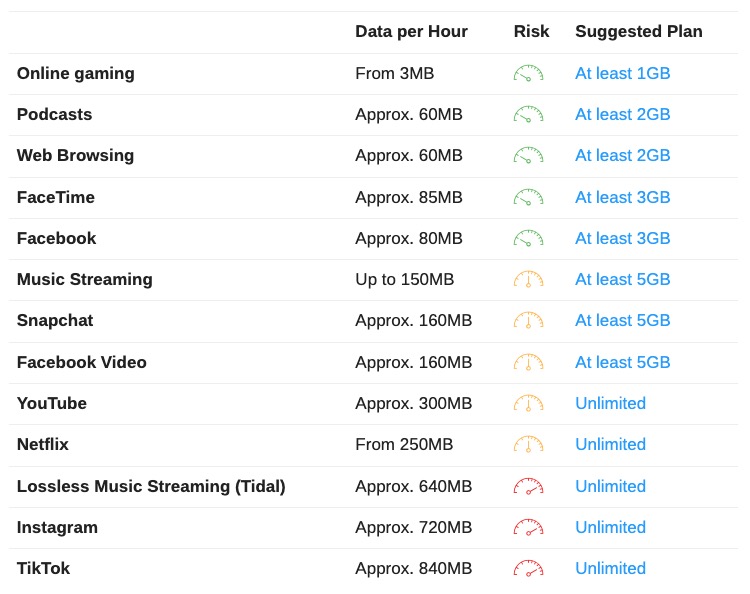
However, if one is more judicious in your use, it’s also possible to really stretch that out. Without streaming or large file transfers, stretching 50 gigabytes over a month doesn’t sound too hard. Take a look at the table above of usage estimates from a whistleOut article on selecting cell phone rate plans. If these estimates are accurate, 50 gigabytes will get you 588+ hours browsing Facebook and even more web browsing.
The typical needs of a cruiser, checking weather, staying in touch with those on shore, perhaps a bit of web browsing, and maybe even some voice-over IP phone calls is likely to total in the tens or hundreds of megabytes. That traffic will barely dent your allocation. Leaving room for some entertainment, though maybe not extensive streaming.
Lastly, at $2.00 per additional gigabyte, the impact of exceeding your allocation doesn’t have to be costly. If you’re in the last leg of an open water trip and just need to check the weather, send and receive a few emails, and perhaps some texts, it’s likely one or two gigabytes will get that done.
What is inland?
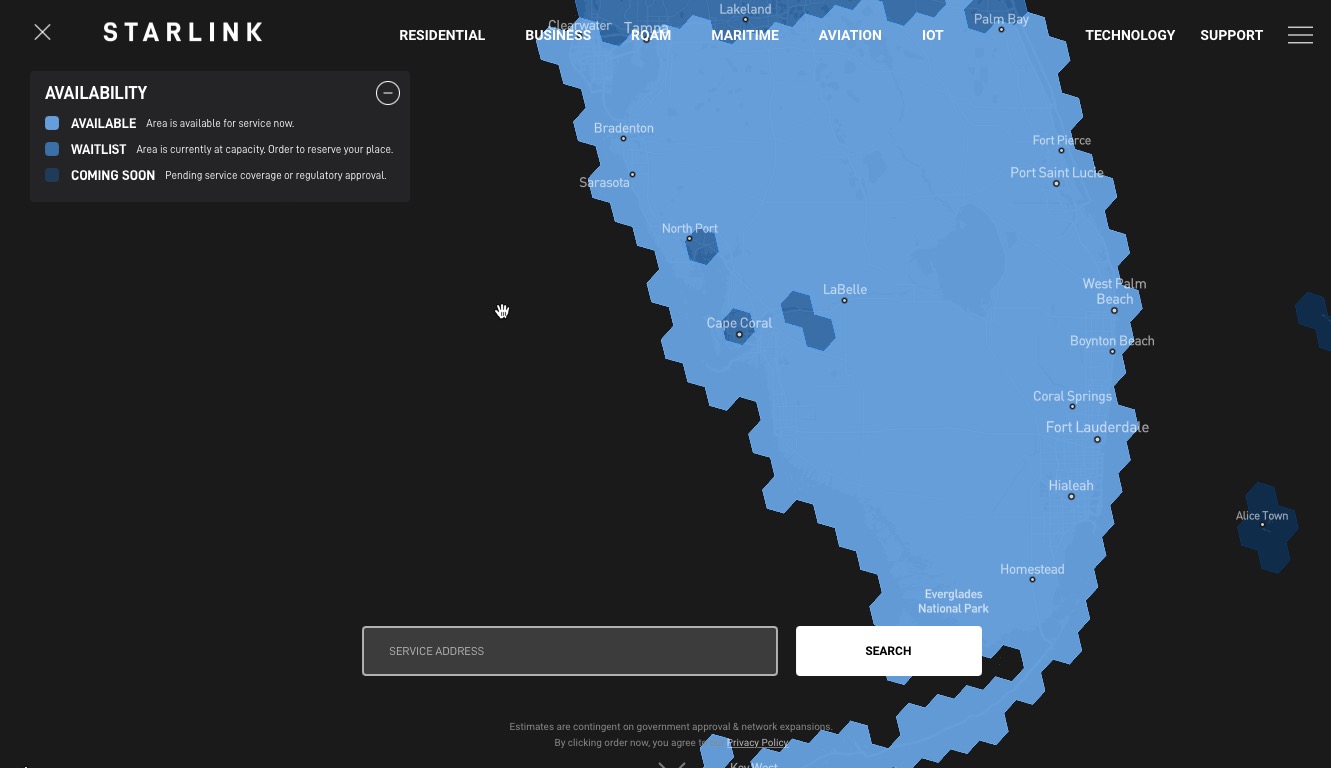
Starlink has used mutliple terms when describing where their service is approved. Sometimes they’re quite clear, like when they say the service is to be used on land. But, sometimes, like in the case of Maritime, they use the term inland and include in parentheses lakes and rivers. I found one screenshot of a response from Starlink support seeking clarity on this definition. Sadly, I can’t find it again — though I’ll update the article if I do — but the response was logical. The support rep pointed out that the coverage map uses hexagons to show each cell of coverage. The rep also explained that if there’s land in the cell, that’s considered an inland cell, without land in the cell, it’s an open water cell.
Only time will tell if that response accurately describes how they’re determining the classification of a location. If it proves innacruate, it certainly wouldn’t be the first time a Starlink support rep’s information has been debunked.
Final thoughts
There’s no doubt, compared to the single, $100-a-month service Starlink offered at launch, things have gotten more complex and more expensive. But, they are also delivering more value, coverage, and options than the launch service. With the cavaet of concern for how inshore data affects the 50 gigabyte priority allocation, I think Starlink has an option that addresses what many recreational cruisers are after.


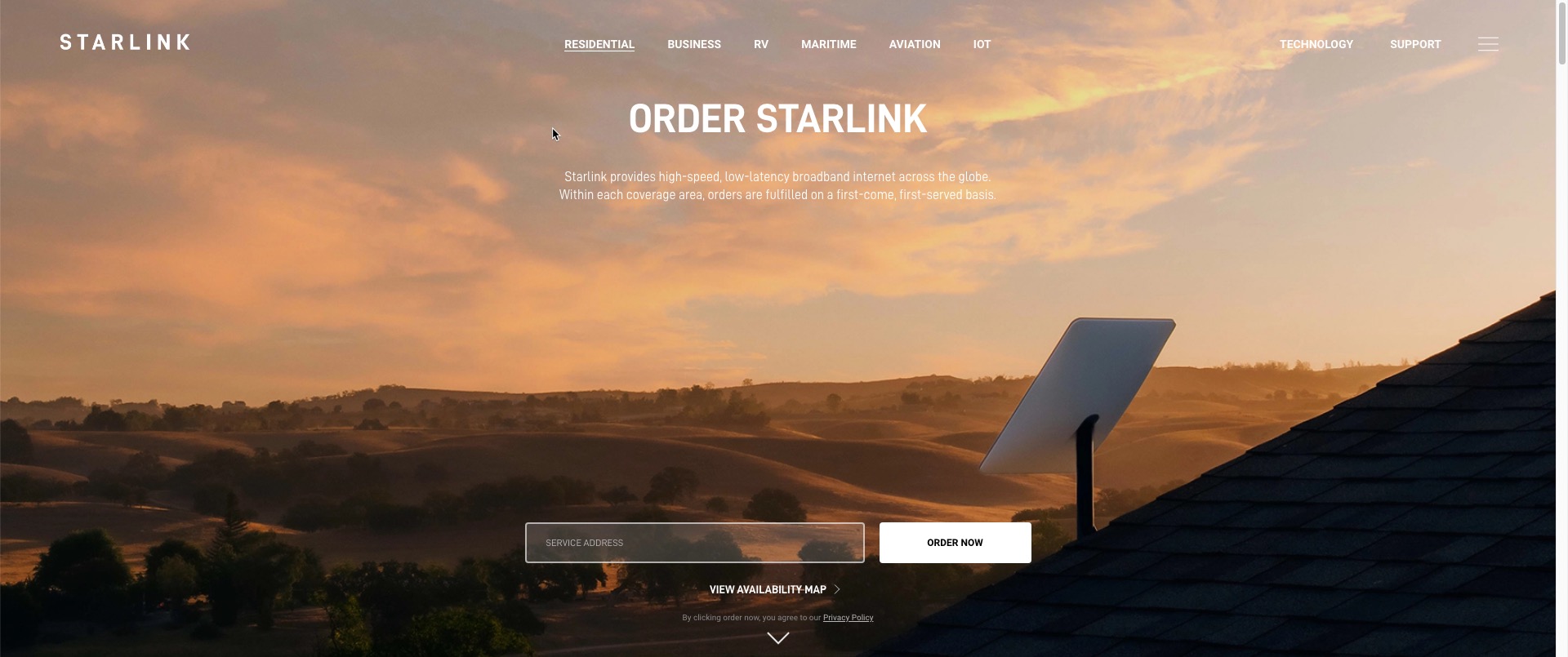
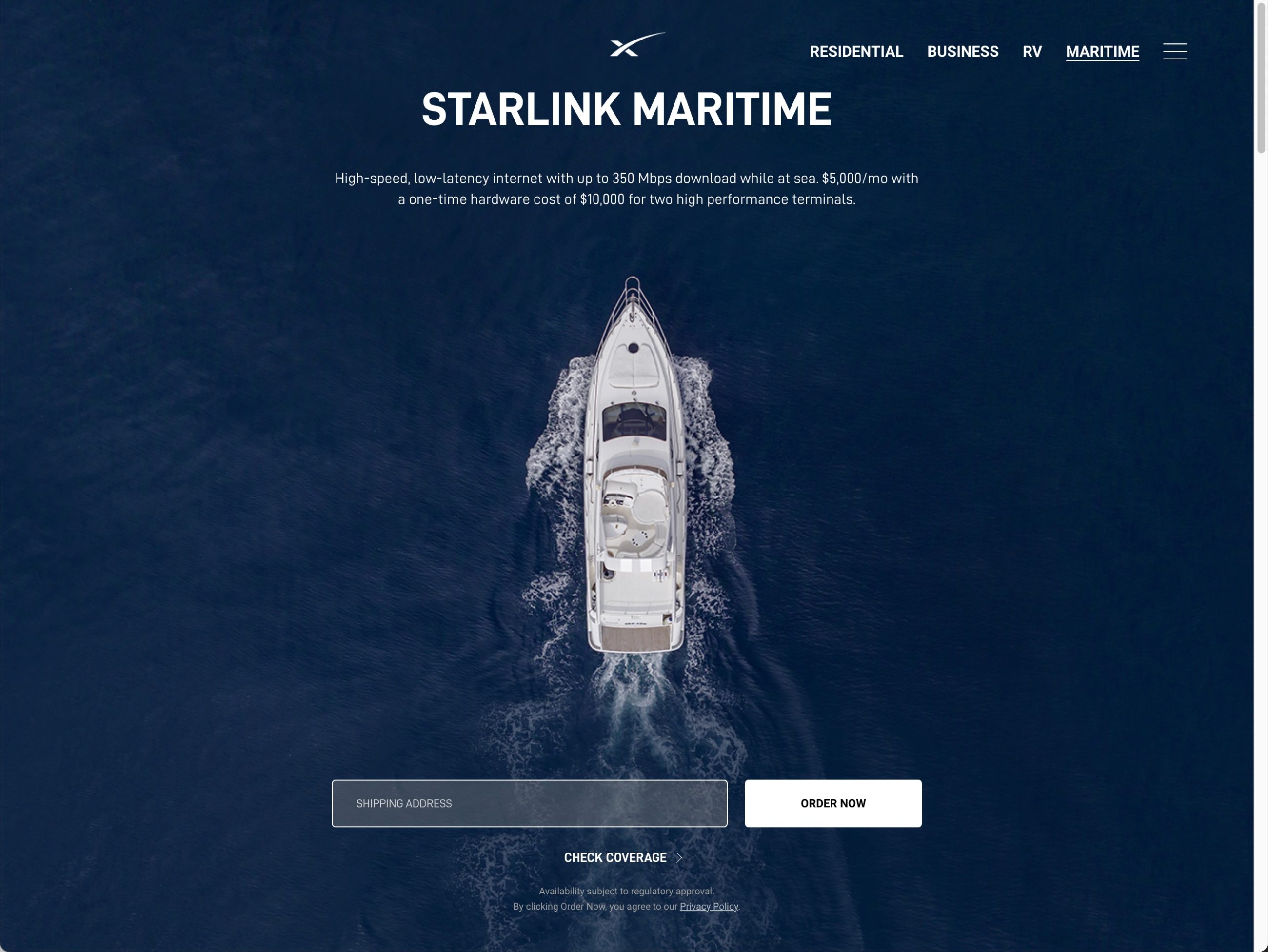
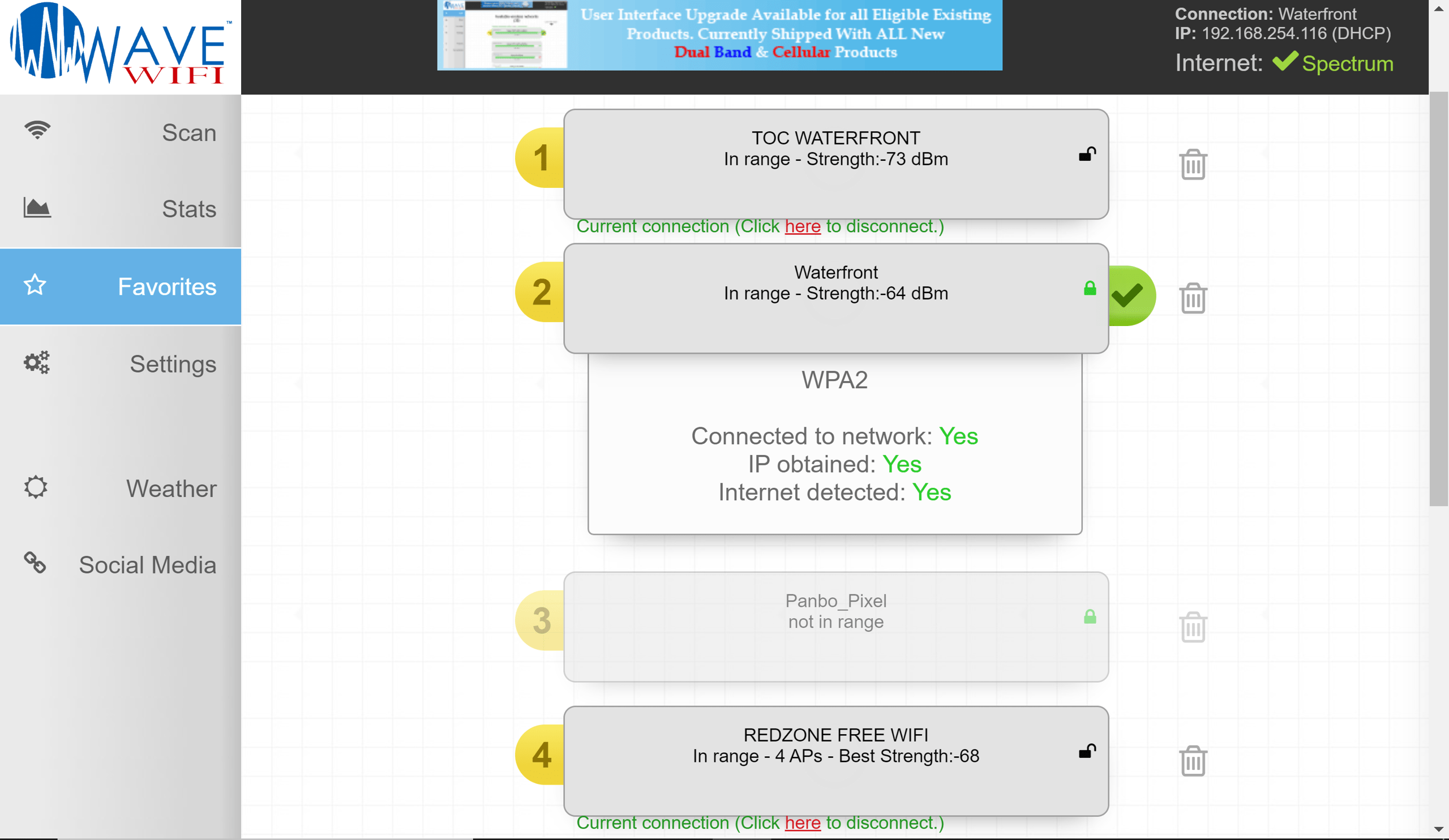









Hi Ben, it is also useful to point out that at least at this time, its possible to upgrade from Roam to Maritime through the Starlink website. This takes effect immediately. It is also possible to downgrade back to Roam at the end of your billing cycle. This opens it up even more for many users that spend only a portion of their time in open waters.
(The only caveat is that you need the Flat HP Antenna, which is available for Roam and Maritime)
May be a glitch, but looks like some current SL users with standard antennas are able to switch to the new 50 gb Maritime/Mobility plan, though without in-motion use:
https://www.facebook.com/groups/starlinkonboats/posts/1291220794763256
I’ve been watching that too. I can tell you that my $600 standard hardware, activated as residential with portability gives me options to switch to both flavors of Roam but no Maritime. I’ve seen some theorize that perhaps it depends on regulatory approval for use in motion in various countries, but the examples reported so far don’t seem to show a clear pattern. Without the ability to get any info from SL, all we can do is speculate.
-Ben S.
I am one who was able to switch early in the game, Round Dish based in France, Roam Regional, and it let me up to Maritime 50gb. Charged me immediately, but since I didnt mean to really change, I tried going back to roam and it says i’m on Maritime until the next billing period and under Roam it says “Pending”.
Strange to see what you guys are saying and seeing. I sub’d SL last Aug, RV with mobility with the $600 hardware. Service was amazing through November 22, paused the service for winter and turned back on mid march. Had next to no service, checked my account a week later and it was changed to Regional Roam automatically without me being notified. A week later checked back again and there was an upgrade option, maritime $250/month. That was and still is my only option. Possibly because of the $600 hardware. I don’t know. 50gb priority isn’t really enough for a month of weekends on the Chesapeake bay. It would be great if it were 100gb. But I will say the best effort service isn’t really usable for entertainment. Very disappointing.
Worth noting is what appears to be three levels of priority:
Roaming (RV/Roam plan, outside of your hex in grandfathered residential with mobility, and after priority data in Maritime), Residential, and Maritime/Business Priority data.
Being above residential is useful for some of the areas we cruise, as even though it would be “inland” and unlikely geofenced, it’s remote enough that there are so many residential users that “roaming” service is near unusable, and none of our cell carriers have good service. So being able to boost above them would be useful for work from boat.
What would be really nice is to have a “switch” to turn on priority service when we need it and not that I burn it sitting somewhere inland. Also interested to know if I am on “roam” aka RV and did hit a “beyond inland” geofence, would my connectivity still allow me to do a fairly instantaneous upgrade or would I have to find cell service or an inland hex to make the switch…
For me it’s academic – I am holding onto residential + roaming until they drop the new dishes with lower power draw as the HP flat is too thirsty for me right now. That or they hard geofence beyond the current hex scheme. We don’t use the dish enroute so in-motion isn’t really a thing for us yet.
PS: typo in the table you made – you show the $250 plan having 250GB of priority vs 50.
Sven,
Thanks, I’ll get the table updated. I think you’re right about the prioritization but I haven’t been able to find enough hints in the TOS to really put it all together.
I want to call attention back to what you say about power consumption of the in-motion terminal. I think that’s a critical point for many cruisers. The $600 hardware is already relatively power-hungry. The reports I’ve seen suggest that in-motion is twice as thirsty as the standard hardware. If that’s the case, that’s likely to be a real issue for many. This article suggests 110-130 watts. That’s around 10 amps of 12-volt DC power. In a 24-hour period, that’s around 240 amp hours of 12-volt battery power. Yikes!
-Ben S.
We tried the HP and saw similar power. We saw the same 110-130W with the HP, and returned it as a result. Our regular residential dishy is 30-50 watts – less with a POE injector as you skip the AC->DC conversion as well as the whole router needing power. HP dishy is too much power for the injectors I could find, so it can’t reap that benefit. So in the end, the HP is more like 3x the power from my testing – and for our use that makes it not worth it.
Prioritization scheme I laid out is in the TOS and FUP: https://www.starlink.com/legal/documents/DOC-1134-82708-70
There are really four bins outlined: Throttled (Business after priority), Basic (Roaming), Home Priority, and Business/Maritime Priority.
Whether there are actual subclasses beyond that, remains to be seen.
“ Business and certain Mobility Service Plans are allocated a certain amount data for “Priority Access.” Priority Access data under Business and certain Mobility Service Plans are given network priority over all other data on the Starlink network.”
The overages on the entry level Starlink Maritime plan (50GB) is $2/GB not $5/GB. Confirmed that in my account. In fact due to the wording it might apply to all Maritime plans.
Note you can switch from Roam to Maritime at any point instantly so could (unofficially) use Roam as coastal coverage and then bump up to Maritime when crossing oceans. Switching back to Roam doesn’t take effect until the next month but when coastal Maritime after the 50GB will default back to best available deprioritized coverage same as Roam.
Good info and intel. As a longtime Inmarsat reseller and now doing Iridium, we see a few things going on here. 1) SL will crush Inmarsat and KVH/Vsat in all the markets we service. I think this will be the last year boats adding SL will also carry their Inmarsat terminals. 2) I spoke to a real human at SL to talk service plans, coverage and what may be coming down the line. For plans, he mentioned a 500GB plan for $500, I’ll speculate the 50GB plan is what has come of that idea. Coverage, we have a lot of clients sailing to Hawaii but no real user feedback with the HP mid-ocean. He assured me there is coverage, basically wordwide converge sans a few places due to government restrictions and waring politics. Future offerings, he had no idea, wait and see like the rest of us! 3) 50GB, you kidding me? For decades we have been selling data from $10 to $26/MB! I have race boats that were able to keep usage under 100MB for a Hawaii passage. Sure, some used 5GB for $2500/mo, but they had to work pretty hard to use that much data (over a much slower link). If you don’t like 50GB, get into overage at $2/GB, we say big deal! 4) Power consumption is huge, but some perspective. Inmarsat FBB and Iridium Certus draw = or more when the link is open. Of course, the open link with FBB and Certus was tightly monitored to reduce data usage. If you want the experience of a sat link like you are in your living room at home, but in the middle of the ocean, it will cost you ~100 watts. 5) PoE for HP, there are solutions, hacks really. Nothing pretty yet. There should be a 3rd party solution later this year that is elegant. 6) last gasp, we think Iridium is the big winner. If you have SL, you will no doubt also carry an Iridium GO and a handheld. The GO will be used for email, which it is really good at. This will save on power consumption with the SL and be a back-up path if SL has a problem (like the rather large antenna gets damaged). Handheld for the ditch bag.
Eric,
Thanks for your perspective and insights. It’s definitely interesting to hear from someone who has been working in this field for a while, especially to hear you say SL will crush the existing players. I entirely agree, but I’m looking from the outside in.
I agree that with a little discipline, 50gb is a ton of data. But, I think a lot (most?) of the SL users aren’t coming to SL accustomed to the bad old days. They’re coming to SL from, as you put it, their living rooms. And, they’re bringing living room expectations to the middle of the ocean. A tiny bit of bandwidth discipline and 50gb is an embarrassment of riches. That said, the current situation of using your 50gb cap on shore is unfortunate, though as you note, that’s only $100 worth of data if you buy it a $2 gigabyte at a time.
-Ben S.
Think of it this way.
50GB / mth is roughly 150 kbps 24/7/365.
This is a lot for anything except interactive browsing, and much more than is needed for anything essential at sea.
If one worries about bandwidth, one could install a UBNT ERX router (50 usd or so) and configure a suitable traffic shaping rules to always keep the traffic below the cap, but allowing bursts.
How ever creative one wants to be, but lets say daily allow burst traffic up to 50% of the quota and then asymptotically slow down the traffic so that on daily basis it reaches 100% always at the change of the date. With traffic scheduler rules, that is like 10 lines of shaping rules and what is GPT-4 if not for writing rules like this?
Beauty of GPT-4. You get a confident answer, that looks correct, but is completely wrong. Good starting point, though:
#!/bin/bash
# Define the interface name
IFACE=eth0
# Define the maximum bandwidth
MAXBW=1000mbit
# Define the maximum burst size
MAXBURST=1gb
MAXBW_AFTER_BURST=2gb
# Define the burst time
BURST_TIME=5s
# Define the shaping rule
tc qdisc add dev $IFACE root handle 1: htb default 10
tc class add dev $IFACE parent 1: classid 1:1 htb rate $MAXBW burst $MAXBURST cburst $MAXBURST
tc class add dev $IFACE parent 1:1 classid 1:10 htb rate $MAXBW_AFTER_BURST ceil $MAXBW burst $MAXBURST cburst $MAXBURST
tc qdisc add dev $IFACE parent 1:10 handle 10: sfq perturb 10
Thanks for the perspective. The thing is – in all conditions other than heavy snow and rain, the small dish at 40 watts does the same speed as the HP for us. Prioritization was a much larger factor (using residential dishy in the home zone crushed the HP). We didn’t quite test to Hawaii – but plenty of remote (with respect to where their ground stations are) locations. For mid-ocean the boat to satellite link would be the same, but using ISL for backhaul to ground station – so power requirements shouldn’t be different (and anecdotally the regular dishy works fine when not geofenced based on people using regular dishy across the Pacific/Atlantic).
You are definitely right – power consumption becomes a much bigger deal as with 50+GB it’s less about scraping a grib or two and a text-only email, but sending photos, videos, realtime telemetry, video calling, remote work, etc…. Now it starts looking like a 24/7 connection instead of something just turned on a few times a day.
For most cruisers, this isn’t displacing satellite communications, but more of the KVH TV domes and cellular networks. Compared to cellular, even the 40w draw is still a step up, but the universal aspect of connectivity makes it worth it. Starlink + OneWeb + Kuiper etc… will not just disrupt legacy SNOs, but cellular providers as well.
Oneweb is just behind a corner and depending on price might be a huge competitor to Starlink Maritime
https://www.intelliantech.com/en/news/newsroom/one-web-signs-contract-with-intellian-for-flat-panel-user-terminals/#
Has any firm pricing been published?
If it is 100 usd or less it will sell.
If it is 1000 usd or more it won’t, except for the commercial guys.
In the middle there is room for competition.
It won’t be $100. Their prior flat panels were $6k. SpaceX top of the line panel is $2,500. The cheapest panel is Starlink standard for $600 and SpaceX admits they lose about $400 per dish. So if it is price at $1K it would be great. $100 might as well say I wish it was $7. I think $3K to $5k is more likely.
I mean the monthly cost.
Antenna is not that critical for the cost. VSAT dishes used to cost desikilobucks.
No one expects the antenna to cost 100 usd, nor 7 usd.
So SpaceX changed everything … again.
Maritime is now becoming Priority Mobile. Roam is becoming Mobile. One interesting thing is Mobile (aka Roam) now has an option to pay as you go for Priority (aka offshore) data $2/GB. For the cruiser mostly inland and coastal and only occasionally crossing oceans that seems like the way to go.
This makes not sense to me.
Why would anyone get 50GB Priority Mobile?
Why not just get roam/mobility basic and upgrade it to priority data when needed? Price works out to be exactly the same for months with passage, or less if you order less than 50GB, and that also neatly solves the-passege-in-the-latter-part-of-the-month problem.
Or maybe in motion use requires flat high perf and that is not available for Budget Mobile.
Who knows? And it might have already changed.
Yes there is indeed the fine print:
“Mobile Priority use on the ocean or in motion is dependent on country authorization. See approved markets here. In motion use is only designated for Flat High Performance hardware and in approved countries, as seen in specs.”
Besides the rapid name change from “Roam” to “Mobile” it sounds like StarLink is also cracking down on ocean use with non-Mobile Priority service plans. Reader Ron de Moraes reported this notification on another thread:
“ [Action Required] Update your service plan
Over the past 60 days, your Starlink has been used in areas that violate the terms and conditions of your service plan: your plan does not include service on the ocean. Starting as early as May 9th, 2023, you will be unable to connect to the internet on the ocean except to access your Starlink account where you can make updates to your account…
More here: https://panbo.com/starlink-2023-the-ever-changing-state-of-affairs/#comment-447321
Many have received this message.
More interesting is if and when they start to cracking down in motion and ocean usage with non Flat High Perf dishes.
That is going to be interesting debate.
It seems Starlink has started officially stating that in motion is 10 miles per hour or greater. They also seem to be softening their stance on using the $600 hardware in motion. The verbiage now is that in motion use is at your own risk (includes a CYA warning not to drop your dishy on someone below) and states the warranty may be voided by in motion use:
“Customers using a Starlink that is not the Flat High Performance Starlink in motion do so at their own risk; equipment falling onto the road or off a vessel due to poor installation practices can cause serious accidents resulting in bodily injury or damage to property. Damage to the Starlink dish while in motion may result in a void of your Starlink dish warranty.”
-Ben S.
Ben,
Are you aware of any interference between the Starlink and a Furuno SCX20 Sat Compass, do to where each device is mounted?
Minimum distance between , same horizontal plane or which device should be mounted higher. We were initially planning to mount both devices on the Hardtop same Horizontal Plane.
Thanks
GJP
Gregory,
I’m not aware of any specific issues akin to what exists with radar units. But, Starlink is transmitting, so a minimum of 1 meter of separation seems prudent. That said, I’d recommend temporarily placing SL in the location you plan to mount it. Fire it up and watch the count of visible satellites on the SCX20, if they decline in a repeatable manner with SL in place, you’ll need to find more separation.
-Ben S.